817 Search Results for praactical teaching
October 31, 2013
by Robin Parker -
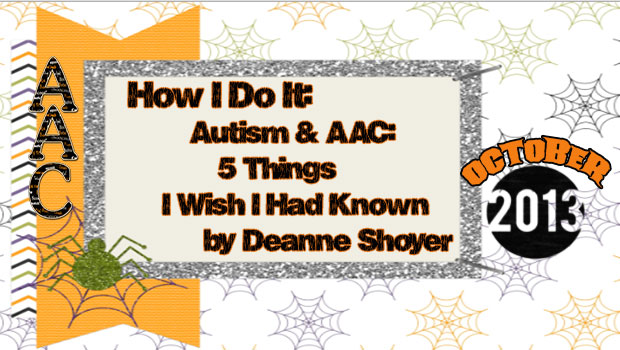
We are so pleased to have connected with Deanne Shoyer from Small But Kinda Mighty and even happier that she is our guest blogger today. Deanne is a mom of twin boys who both are on the autism spectrum. Deanne successfully fundraised to buy iPads for her boys and has been active for more than 3 years in social media and in the special needs app community. She has written about many things but often focuses on implementing AAC in a very PrAACtical way. Please feel free to share this very important post as she highlights AAC, what she has learned, and how it may help others. by Deanne Shoyer at Small But Kinda Mighty (original post at Small But Kinda Mighty) In the title of this post I’ve linked autism and AAC for a specific reason. A lot of the points here are equally applicable to people who have a... [Read More...]
October 21, 2013
by Robin Parker -
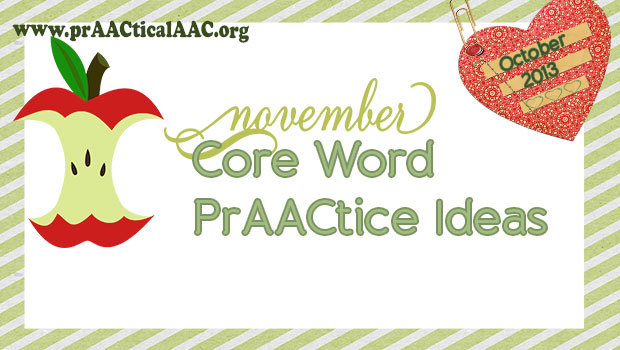
More core word prAACtice ideas. Whether you are just getting started or have been working with core word vocabulary for a long time, the teaching strategies you use to TEACH, helps turn regular words into real communication and language. Provide Aided Language Input- ALI in Meaningful Language Experiences. PrAACtice USING core words in many, many opportunities. Authentic, meaningful prAACtice is fun for everyone. This core word prAACtice is for November. There is a lot of food, leaves, changes of weather, thankfulness, sharing, and holiday spirit. Here are some ideas of activities that can go with the core word words, phrases and sentences: Do art project– Make a turkey because there are many opportunities to use body. From asking for the ‘body of the turkey” and asking for “feathers of the body” there can 50-100 opportunities for prAACtice. You can do this with a beginning communicator who can ask for a... [Read More...]
October 12, 2013
by Robin Parker -
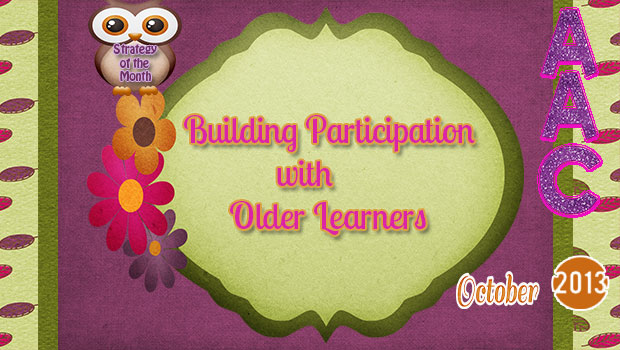
We love active participation for communication and language learning. Actually, we love active participation in all areas of life for us, for our students, for everyone. When Carole introduced the Building Participation Strategy of the Month, she discussed the role of the Participation Model (Beukelman & Mirenda, 1988; 2013). The Participation Model is a framework for understanding the barriers to participation and then from a prAACtical intervention standpoint developing strategies and activities to increase active participation in a variety of (ALL) aspects of life. For the 2012 AAC Awareness Month, we discussed barriers to participation. This year’s focus is on activities and strategies for getting past the barriers to building age appropriate authentic active participation for ALL learners. We have learned that when older learners with significant communication challenges are provided with age appropriate activities and supports, they can be engaged and motivated to participate and can often surprise us with... [Read More...]
October 8, 2013
by Carole Zangari -
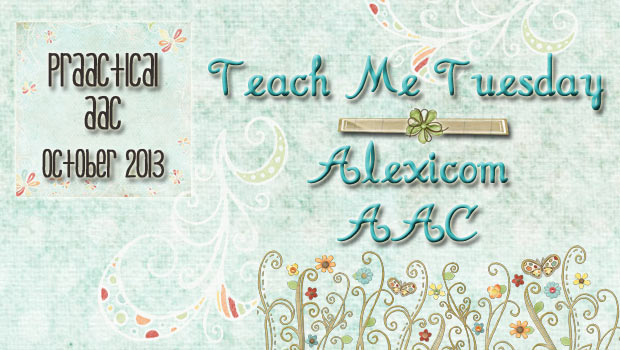
Teach Me Tuesday is a new feature that offers prAACtical resources for our colleagues who are looking to learn more about SGDs and AAC apps. Each week, we’ll share training resources that we’ve found to be helpful for those of us teaching ourselves how to use these things. There is no rhyme or reason to which ones we share each week, and endorsement should not be implied. As always, it’s up to each SLP and team to make recommendations based on their assessment data and other relevant factors. If you have devices or apps that you need to know more about, feel free to contact us and we will put that on our list. If you are an author, vendor, or developer who wants to share materials with us, we certainly welcome and appreciate that, but they must come with no strings attached. The product may or may not get... [Read More...]
October 7, 2013
by Robin Parker -
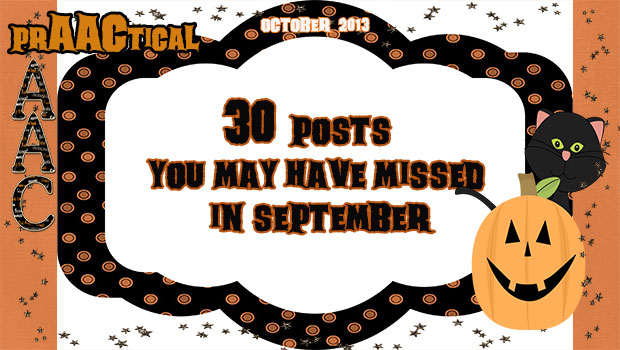
Strategy of the Month Infusing Literacy Learning Opportunities into AAC Therapies AAC & Literacy: Setting the Stage Literacy Lessons for Beginning AAC Learners Literacy for Everyone with Adapted Books PrAACtical Thinking PrAACtical Resources: A Look at the NJC The PrAACtical Power of Contrast 31 Posts You May Have Missed in August Literacy: Cookies & Core 5 Things to Love About the SETT Framework 10 Tips to Encourage Love of Literacy 5 Easy Ways to Add Authentic Writing Experiences to Your AAC Therapy AAC & Dinosaur Apps for Literacy & Language 5 AAC Strategies and the Use It of Loose It Philosophy 10 AAC Intervention Apps We Can’t Live Without 5 Things to Consider About Prompts in Teaching AAC Loving Literacy in AAC Keep Calm & Write ON.. fro All Writers Thoughts on Involving Our Clients in AAC Vocabulary Selection Presuming Competence & Teaching AAC 5 reasons We Don’t (Typically) Use... [Read More...]
October 5, 2013
by Carole Zangari -
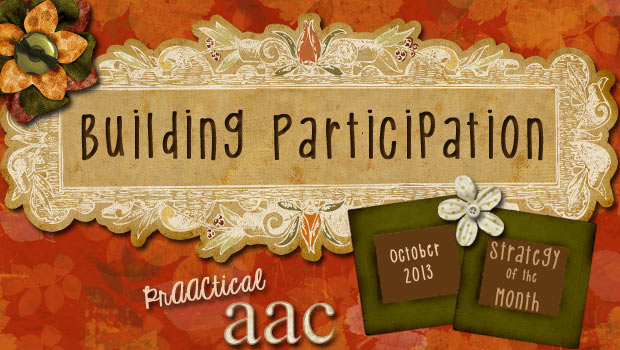
Do you know any of our friends? Jenna can use a talking switch with only a little bit of support. But at calendar time, no one thinks of asking her a question. Hao knows almost two dozen signs and can use a communication wallet with non-signers. But at social gatherings, he’s mostly off to the side playing a game on his iPhone. Isaac uses his SGD capably and can create grammatically correct sentences that include noun phrases and conjunctions. But in Chemistry, his lab group conducts their experiments and writes up the lab report without his contributions. Sienna is able to choose between preferred and non-preferred items in a field of three and is learning to do so in a field of four. But the only time she gets to make a choice is at mealtimes. Like many of you, we put in countless hours helping children and adults who... [Read More...]
September 26, 2013
by Robin Parker -
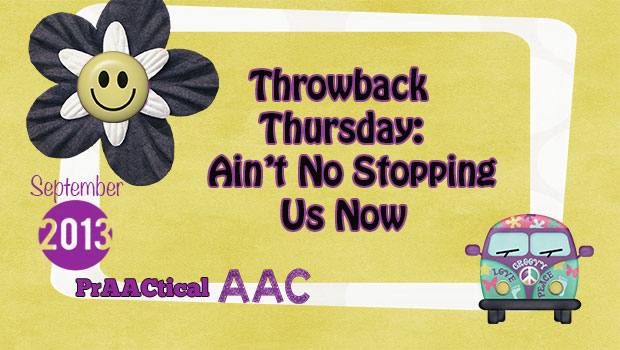
(updated/original version published on October 20, 2012) Sometimes saying ‘no’ to the demands of the day actually helps us rejuvenate and allows us to be more productive. Saying ‘no to false information helps us to advocate for ourselves. The ‘no’ topic seems to be trending now. There have been quite a few blog posts and comments about the issue (Just Say No, How and When to Give Your Students A Break). We are so glad that this topic is getting more focus. Of course everyone agrees that ALL people have the right to say ‘no’. But it is not always so simple. There are many types of ‘no’. There is the outright ‘no’, the ‘no’ to more work, the ‘no’ for disagreement, the ultra important ‘NO’ to unwanted touching, and many more. And depending upon how you say ‘no’ is the difference between it being accepted or… NOT. The issue... [Read More...]
September 21, 2013
by Carole Zangari -
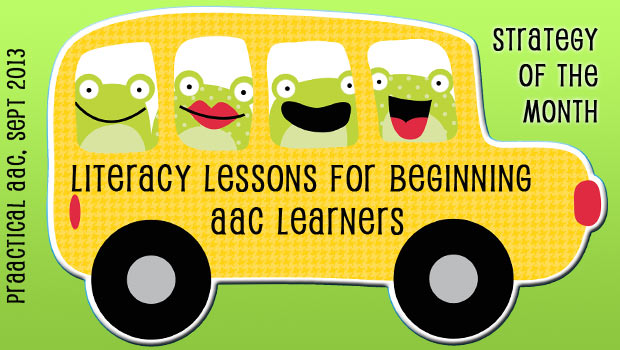
Like some of you, we are often met with skepticism when we encourage teams to work on literacy skills with individuals who are still learning the very basics of communication. Recently, we had the opportunity to begin this journey anew, and model a literacy lesson for kindergartners who have no formal communication system, are not answering yes/no questions, and do not consistently select preferred items when offered choices. Why work on literacy with students who are not routinely expressing their basic preferences? Because the longer we wait, the longer it will take to get there. Because it offers wonderful opportunities to build communication, too. Because when other people see us teaching reading and writing, it changes their perception of the student in a positive way. Because they will enjoy it. Because there are mandates for us to address the general education curriculum. Because if we set the bar high and... [Read More...]
September 17, 2013
by Robin Parker -
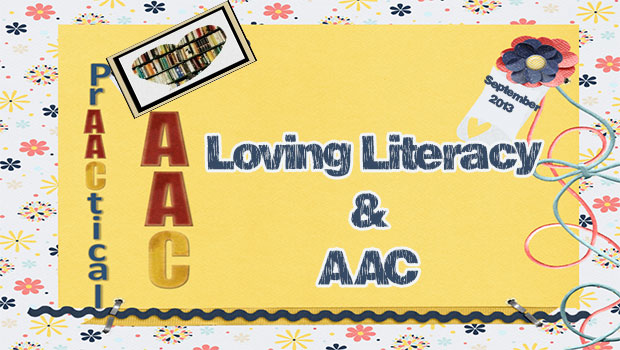
It’s International Literacy Month. We want to take this opportunity to remember that EVERYONE should have direct literacy instruction. Some students will be starting by learning to enjoy books while others will be readers already. Either way, there should be a literacy plan with short term and long term goals. If you need ideas for beginning or just expanding reading skills, here are some seriously excellent literacy resources for AAC. Take a look, enjoy and please let us know your favorite literacy resources so we can add them to this list. TalkSense- 101 ideas for literacy and AAC. Also, provides access to many picture symbols and litSymbols Jane Farrall’s Blog: Literacy, AAC, & Assistive Technology– Literacy resources specific to AAC and assistive technology Tar Heel Reader – books for beginning readers of all ages. Bookshare- accessible books and journals for readers with print disabilities Center for Literacy and Disabilities Studies–... [Read More...]
September 13, 2013
by Carole Zangari -
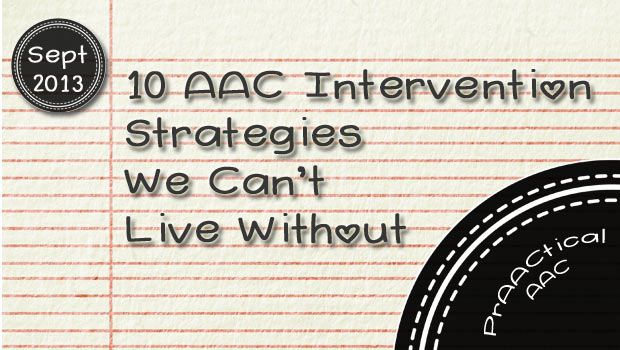
It’s a new semester for us and we’re having lots of conversations with student clinicians about teaching strategies. Here are some of the things they’re putting in their AAC toolkits. Making language visible: Use visual supports to give information, explain, set boundaries, and make expectations clear. Aided language input and focused language stimulation: Teach AAC by speaking AAC. Communication temptations: Make the client want to communicate to get his/her own agenda met Expansions and extensions: The language facilitation strategies we all studied in our language intervention classes work in AAC, too! Repetition with variety: Working on the same thing in different ways is a sure way to build learning and keep treidthings fresh Contrastive examples: Teach through the power of clear examples, both positive AND negative Backward and forward chaining: Great for teaching things that have multiple steps, like sending emails or posting to Facebook Structure: Creating structure helps learner better... [Read More...]









